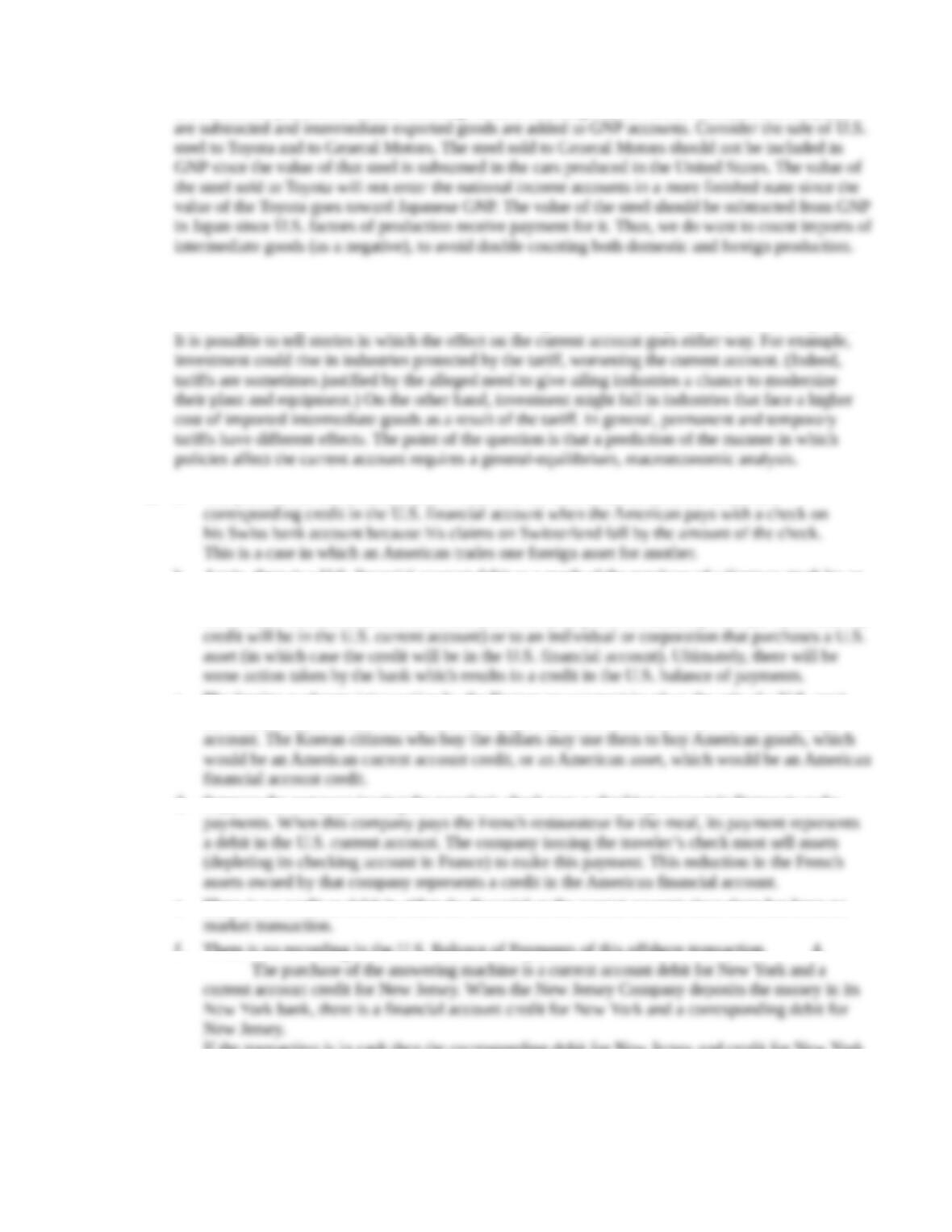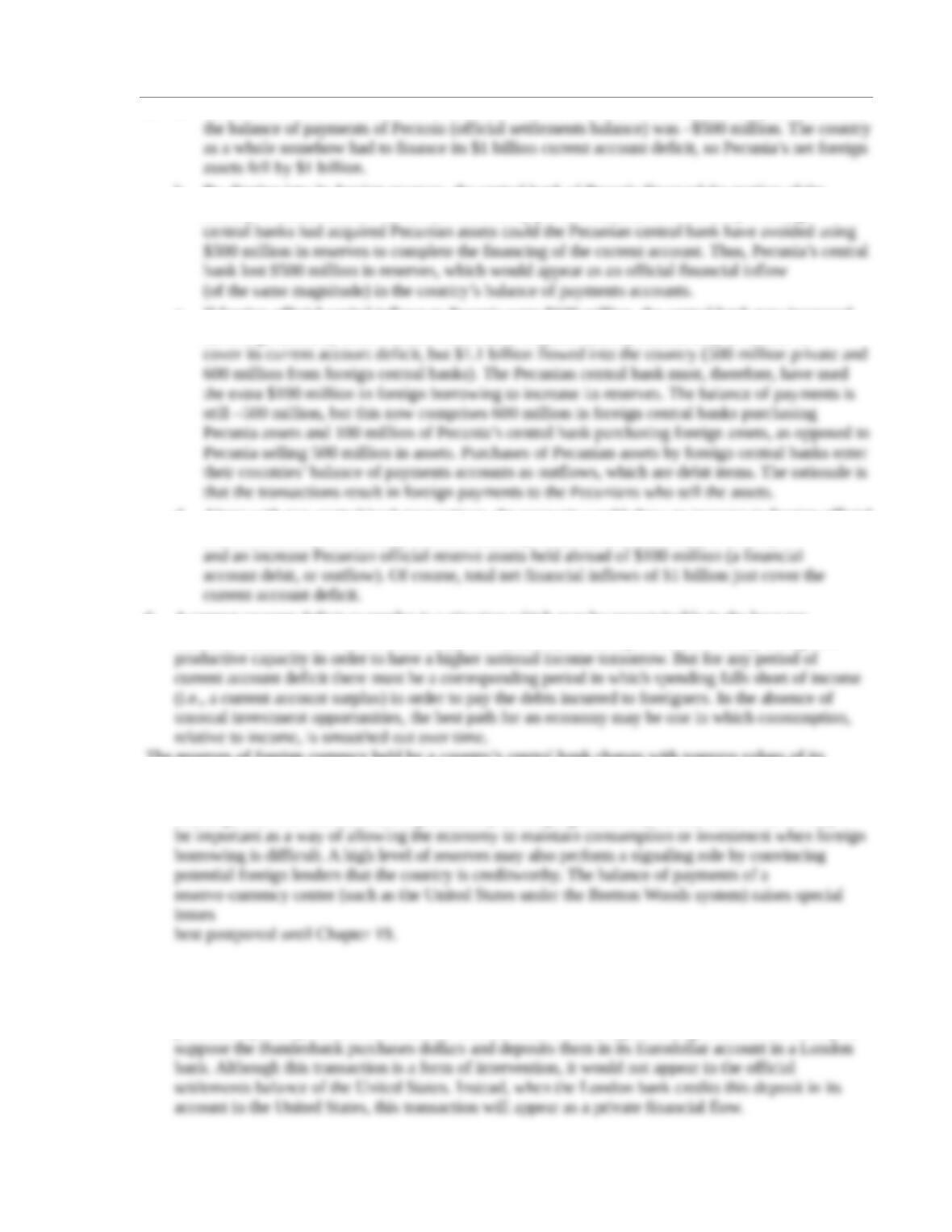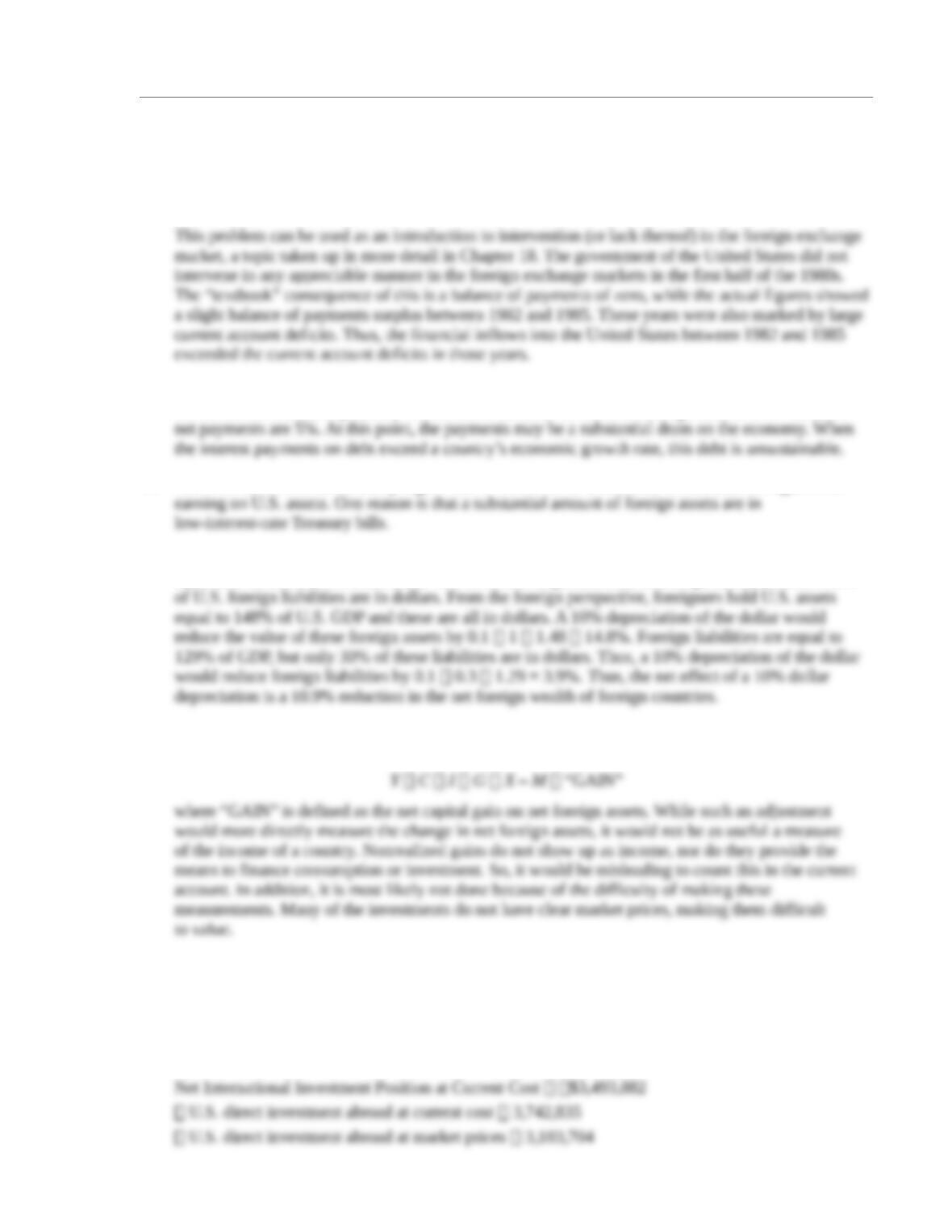Chapter 13 National Income Accounting and the Balance of Payments 65
8. A country could have a current account deficit and a balance of payments surplus at the same time
if the financial and capital account surpluses exceeded the current account deficit. Recall that the
balance of payments surplus equals the current account surplus plus the financial account surplus plus
the capital account surplus. If, for example, there is a current account deficit of $100 million, but
there are large capital inflows and the financial account surplus is $102 million, then there will be a
$2 million balance of payments surplus.
9. If both assets and liabilities pay 5%, then the net payments on the net foreign debt would be 1.25%.
While not trivial, this is probably not too bad a burden. At 100% net foreign debt to GDP ratio, the
10. The U.S. receives a substantially higher rate of return on its assets held abroad than foreigners are
11. The case study states that U.S. foreign assets are equal to 129% of GDP and foreign liabilities are
equal to 148% of GDP. Furthermore, 70% of U.S. foreign assets are in foreign currencies and 100%
12. To incorporate capital gains or losses, one would have to consider these valuation changes part of
national income. We would thus change Equation 13-1 to read:
13. The 2009 U.S. net international investment position with direct investment valued at current costs is
$3,493,882 million. To find the net international investment position with direct investment valued
at market prices, we simply subtract the value U.S. direct investment abroad at current cost and add
the value of U.S. direct investment abroad at market prices. Then add the value of foreign direct
investment in the United States at current cost and subtract the value of foreign direct investment
at market prices:







